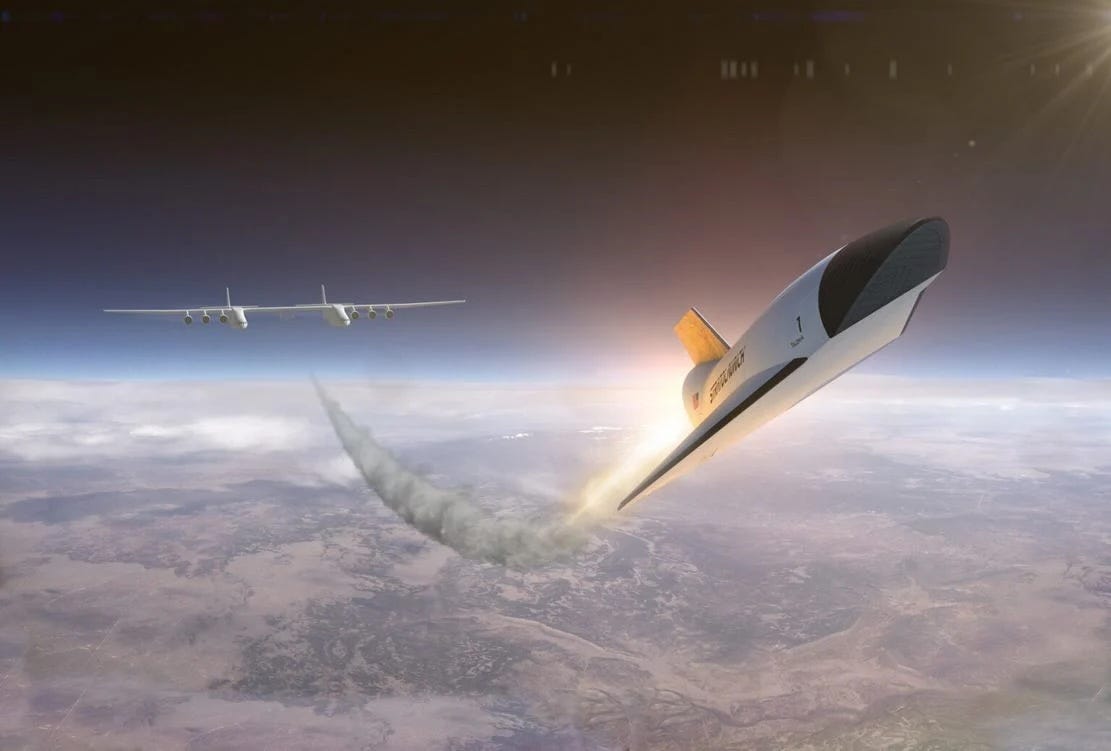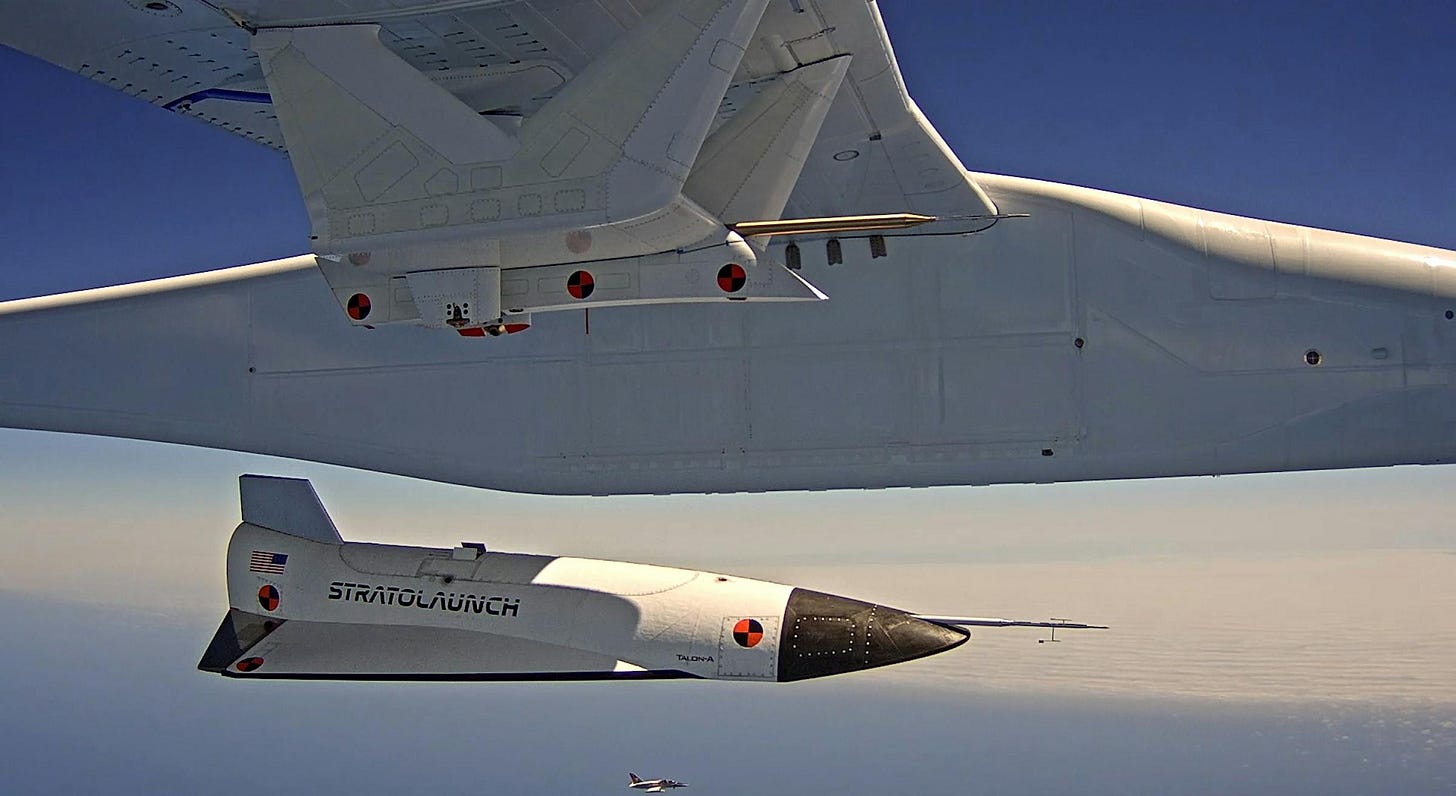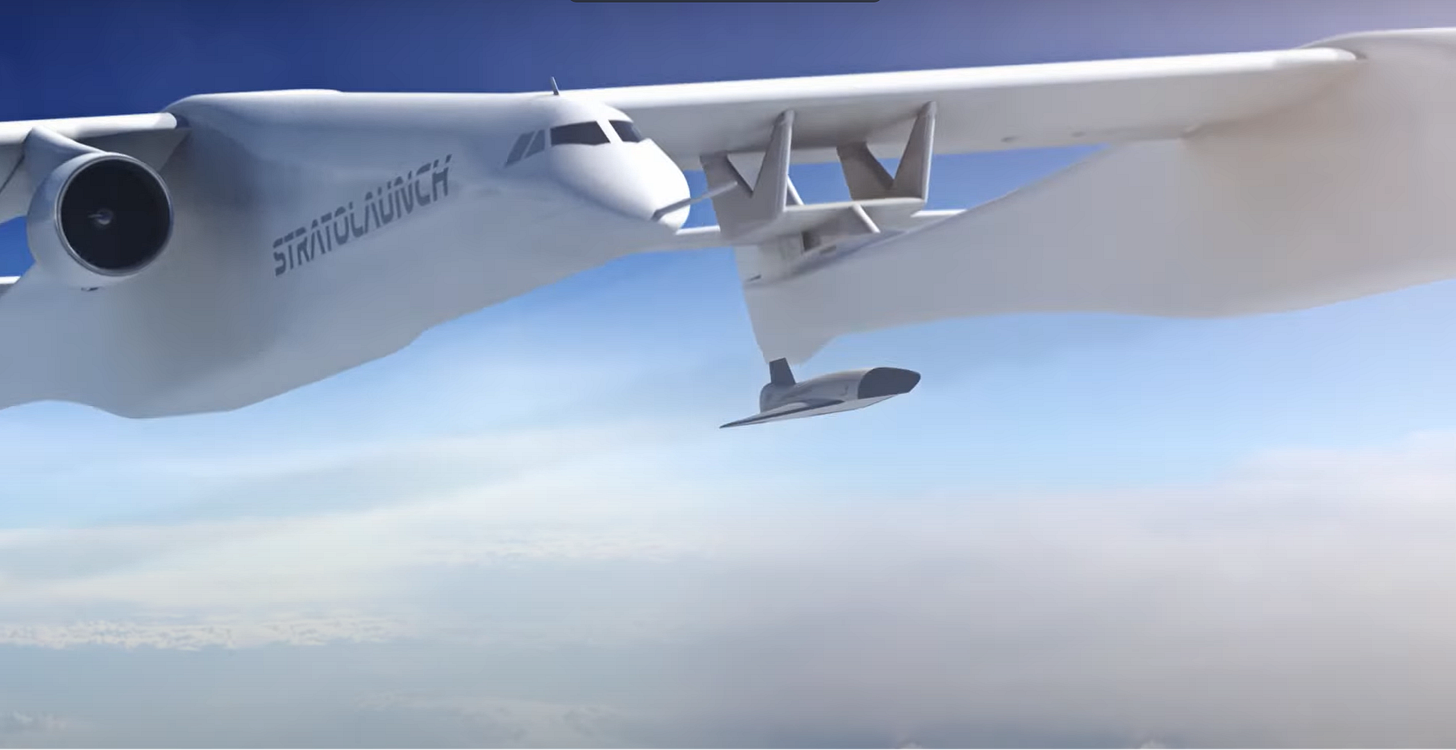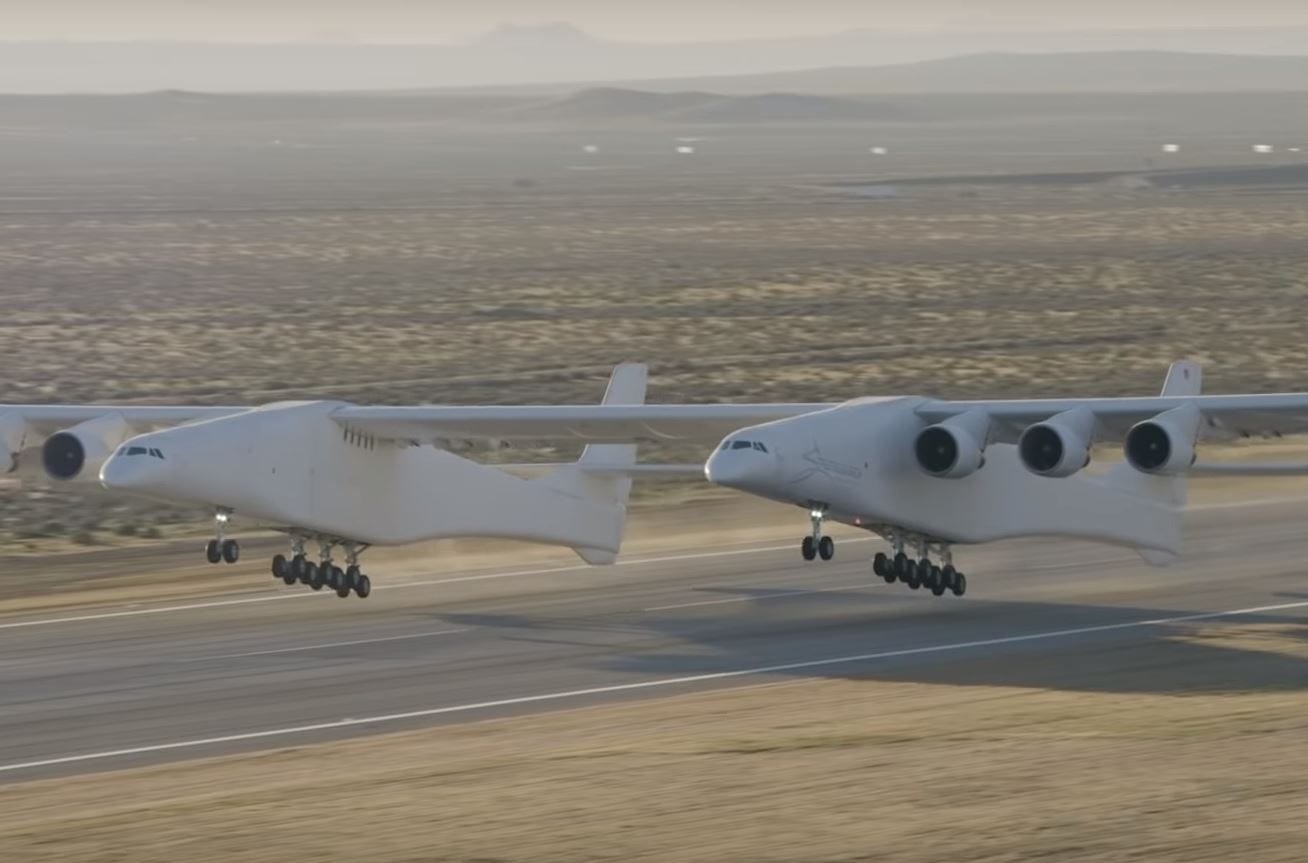Aerospace Engineering Analysis: Stratolaunch and Its Mythical Roc and Talon
The Aerospace Engineering Firm Stratolaunch is developing re-usable hypersonic vehicles for testing.


The Engineer's Perspective is a reader-supported publication. To receive new posts and support my work, consider becoming a free or paid subscriber.
Table of Contents:
Overview:
Concept of Operations
The Aircraft and Systems
- The Roc and Spirit of Mojave
-Talon-A
-Ursa Major Hadley Engine
Derived Sacred Requirement and Systems Requirements
-Sacred Requirements
-Systems Requirements
References
Overview:
Founded in 2011 by Microsoft co-founder Paul Allen and renowned engineer Burt Rutan, Stratolaunch has developed an air-launched hypersonic flight test services system. The company's innovative approach involves launching payloads like its Talon hypersonic vehicle from beneath its Roc carrier aircraft, eliminating the need for complex and expensive launch infrastructure on the ground. This air-launched system is designed to be versatile and capable of supporting a wide range of missions.
Concept of Operations (CONOPS) for Stratolaunch ROC Aircraft with Talon-A Hypersonic Test Aircraft
The Stratolaunch ROC aircraft is a twin-fuselage, high-altitude launch platform designed to carry and launch hypersonic test vehicles such as the Talon-A. This derived CONOPS outlines the operational framework, objectives, and procedures for utilizing the ROC aircraft to support hypersonic flight testing with the Talon-A.
1. Purpose
The primary purpose of the ROC aircraft is to provide a flexible, reusable, and cost-effective platform for launching hypersonic test vehicles like the Talon-A.
2. Operational Overview
Pre-Flight Preparation:
Vehicle Integration: Hypersonic test vehicles, e.g., the Talon-A, are integrated with the ROC aircraft at the Stratolaunch facility.
Flight Planning: Detailed flight plans are developed, considering weather conditions, airspace restrictions, and mission objectives.
System Checks: Comprehensive system checks are conducted to ensure the readiness of both the ROC aircraft and the test vehicle.
Launch Operations:
Takeoff: The ROC aircraft takes off from the Mojave Air and Space Port, reaching a designated altitude and speed.
Launch Sequence: At the predetermined launch point, the Talon-A hypersonic test vehicle is released from the ROC aircraft.
Test Execution: The Talon-A conducts its test flight, collecting data on performance, stability, and other key parameters.
Post-Flight Operations:
Data Analysis: Data collected during the test flight is analyzed to assess the performance of the Talon-A.
Recovery and Inspection: The ROC aircraft returns to base for inspection and maintenance, preparing for subsequent missions.
3. Key Capabilities
High-Altitude Launch: The ROC aircraft can launch test vehicles from altitudes up to 35,000 feet, providing a significant advantage in terms of speed and range1.
Payload Capacity: Capable of carrying payloads up to 550,000 pounds, the ROC aircraft supports a wide range of test vehicle configurations2.
Flexibility: The ROC aircraft’s design allows for rapid reconfiguration to accommodate different test vehicles and mission profiles.
Talon-A Specifics: The Talon-A is a rocket-powered, autonomous testbed capable of flying at Mach 5+ speeds and executing a variety of hypersonic flight profiles1. It can carry customized payload experiments, making it ideal for testing advanced aerospace technologies1.
4. Stakeholders
Stratolaunch Systems: Responsible for the operation and maintenance of the ROC aircraft.
Aerospace Researchers: Utilize the ROC platform and Talon-A for testing and validating new technologies.
Regulatory Agencies: Ensure compliance with aviation and safety regulations.
The Stratolaunch ROC aircraft, combined with the Talon-A hypersonic test vehicle, provides unprecedented re-usable hypersonic flight test capabilities.
The Aircraft:
The Roc and (Soon) Spirit of Mojave are the major launch vehicles for Stratolaunch, providing a re-usable, lower cost alternative to traditional launch methods. Payload vehicles such as the Talon-A (See Below) are attached to the launch vehicle, only to be released when the launch vehicle is at altitude and speed:

Roc
Named after the giant predatory bird of mythology, the Roc is a twin-engine, twin-fuselage aircraft with the widest wingspan of any aircraft in the world. The Roc is intended to carry a 550,000 lb payload and has a maximum takeoff weight of 1,300,000 lbs:

Stretching over a football field in length, Roc is Stratolaunch’s primary launch vehicle for its hypersonic payloads.

Keep reading with a 7-day free trial
Subscribe to The Engineer's Perspective to keep reading this post and get 7 days of free access to the full post archives.
